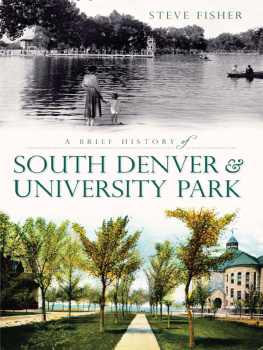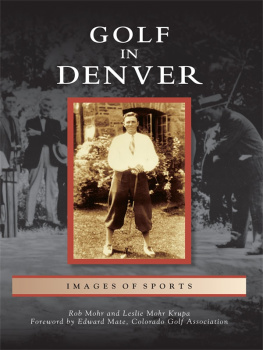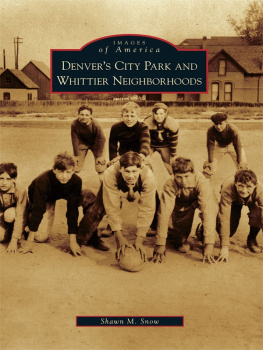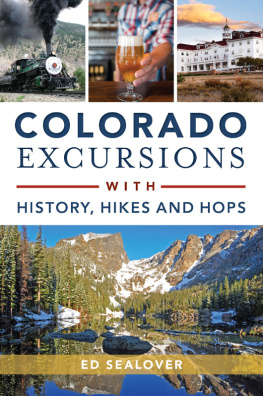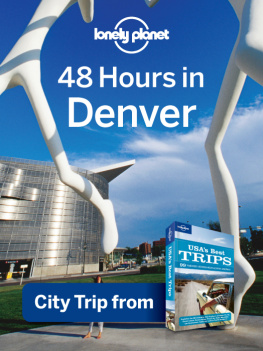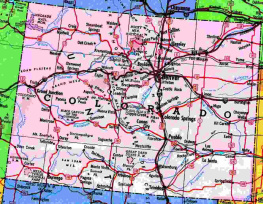

Published by The History Press
Charleston, SC 29403
www.historypress.net
Copyright 2012 by Steve Fisher
All rights reserved
Front cover, bottom: The back of the postcard reads, Great Western postcard and Novelty Co., Denver, CO. There is no publication date, but the postage stamp date is August 9, 1909.
First published 2012
e-book edition 2012
Manufactured in the United States
ISBN 978.1.61423.828.7
Library of Congress Cataloging-in-Publication Data
Fisher, Steven, 1951
A brief history of South Denver and University Park / Steve Fisher.
p. cm.
Includes bibliographical references and index.
print edition ISBN 978-1-60949-233-5
1. South Denver (Denver, Colo.)--History--Anecdotes. 2. University Park (Denver, Colo.)--History--Anecdotes. 3. Denver (Colo.)--History--Anecdotes. I. Title.
F784.D46S683 2012
978.883--dc23
2012004683
Notice: The information in this book is true and complete to the best of our knowledge. It is offered without guarantee on the part of the author or The History Press. The author and The History Press disclaim all liability in connection with the use of this book.
All rights reserved. No part of this book may be reproduced or transmitted in any form whatsoever without prior written permission from the publisher except in the case of brief quotations embodied in critical articles and reviews.
To Matt, Bridget, Marisa, Riley and Madelyn
CONTENTS
ACKNOWLEDGEMENTS
I would like to thank Washington Park Profile staff member Eileen Abbattista, Jim Kroll and Coi Drummond-Gehrig of the Denver Public Library and historian Phil Goodstein for guiding me to many of the images used in this book. Thanks go also to Dresha Schaden, Thyria Wilson, Lea Norcross and Jennifer Light at the University of Denver for technical assistance. Thanks also to Diana Helper, Phil Goodstein and my wife, Katie Fisher, for helpful comments and suggestions.
INTRODUCTION
Blake Gumprecht, a former newspaper reporter who is now an associate professor of geography and chair of the University of New Hampshire Department of Geography, recently published a book entitled The American College Town (University of Massachusetts Press, 2008). In his book, Gumprecht examines some of the most interesting aspects of college towns in the United States. University Park, Colorado, located adjacent to the University of Denver (DU), demonstrates some of these aspects, such as a distinctive mix of residential and commercial districts. Gumprecht writes that college towns are exceptional places, worth knowing and worth knowing about. They are an essential component of American geography. They are part of what makes life different in these United States. They reflect the singular nature of American higher education and the indelible characteristics of American culture.
According to Gumprecht, the American college town is a youthful place that is home to highly educated people who are most likely to hold white-collar jobs. These people tend to be affluent compared to those in nearby communities but have higher living costs, especially for housing. The college town is a transient place where residents are more likely to rent than own, live in high-density apartments and have roommates. University Park, Colorado, has certainly witnessed a tremendous increase in high-density apartment construction in the past twenty years. Gumprecht notes that the college town is cosmopolitan, unconventional and offers a high quality of life, certainly characteristics of University Park and South Denver.
The geography of the American college town typically includes the odd mix of fraternity rows, student housing and faculty enclaves. Commercial districts near colleges and universities tend to be home to an interesting mix of businesses, including coffeehouses, bookstores, pizzerias, bike shops, music stores, bars and ethnic restaurants. College towns tend to be more politically liberal and politically engaged than their neighboring communities, where people with widely differing backgrounds coexist. College sports may play a prominent role in the culture, especially on weekends. At DU, hockey rules the day rather than football, which was dropped in 1961. (A popular local T-shirt reads, DU footballundefeated since 1961.) College towns are home to the inevitable town versus gown clashes between student renters and homeowners, and University Park is no exception, though in recent years disputes have decreased with improved campus-neighborhood communication.
In researching the American college town, Gumprecht conducted more than two hundred interviews, took two thousand photographs and amassed enough material to fill three filing cabinets and a six-foot-long bookshelf. Though he did not visit the University of Denver, he visited numerous U.S. college towns, and several are explored in depth in his book. They include Norman, Oklahoma; Ithaca, New York; Manhattan, Kansas; Davis, California; Athens, Georgia; Auburn, Alabama; Ann Arbor, Michigan; and Newark, Delaware. This book will focus on South Denver and University Park but will explore far beyond the narrow town-and-gown relationship. As we shall see, South Denver has grown and developed far beyond just the University of Denver.
Clark Secrest, writing in the Colorado Heritage magazine in 1992, pointed out that the short-lived town of South Denver had its own railway and its own university but almost no saloons. The town hall was located at 1520 South Grant Street in the former home of Mayor James Fleming, who served three terms. South Denver extended from Alameda Avenue south to Yale and from Colorado Boulevard west to the South Platte River, according to Millie Van Wyke in her wonderful 1991 book The Town of South Denver, Its People, Neighborhood and Events since 1858. For the purposes of this book, I have kept virtually the same boundaries with the exception of using a western boundary of Santa Fe. The town of South Denver formally existed for just eight years, from 1886 to 1894, but played a crucial role in the growth and development of the University of Denver, and vice versa. Colorado Seminary, as the University of Denver was originally known, was founded in 1864 by John Evans and a group of prominent Denver citizens. Evans had previously founded Northwestern University in Chicago (Evanston is named for him) and wanted to create a college in Denver so future generations of students would not have to travel back east for their higher education. Colorado Seminary occupied a solitary building at Fourteenth and Arapahoe Streets in Denver, approximately where the parking garage for the Denver Center for the Performing Arts stands today.
In 1880, the school added the name University of Denver as the degree-granting institution, while the Colorado Seminary would own all property. By the 1880s, the Seminary Building was landlocked, making expansion difficult. Downtown Denver was also increasingly becoming home to a large number of saloons and brothels, just the type of institutions the good Methodist founders of Colorado Seminary wanted to avoid. They wanted to create a utopian educational colony, a university park away from the ills of the city. Evans already had some experience in this area, having helped develop Evanston, Illinois, the suburb of Chicago where his Northwestern University was located.
Deciding to vacate the downtown location for a more pastoral setting, the board of trustees, in 1886, considered several offers of land, including parcels in Barnums Addition and the Swansea area. The offer that was accepted came from a group of farmers headed by Rufus Potato Clark, who promised 150 acres three miles southeast of the city limits in what was then Arapaho County. Clark had conditions to go with his offer, such as the planting of trees and the creation of a street grid. He also demanded that no alcohol ever be made or sold in the area. Legend has it that Clark was a reformed alcoholic who had been saved at a tent revival meeting. Today, you will still find some home mortgages in South Denver with old covenants against producing or selling alcohol on the premises. In areas outside Clarks original gift, the town of South Denver later placed a $3,500 annual saloon license fee, high enough to keep out most of these types of establishments.
Next page
